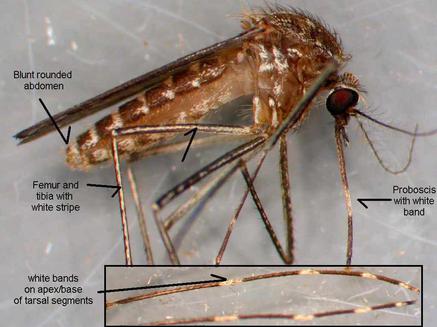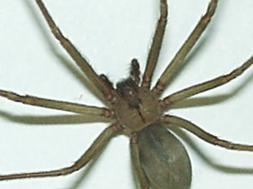Natural Insecticide Has Many Advantages
Insects Don't Develop Resistance
D. R. MacIver, Laboratory Manager
Fairfield American Corporation.
Newark, New Jersey
Despite the many advantages that chemical pesticides provide in controlling plant pests, most have serious limitations as well. Not only do they have to be applied carefully because of possible hazards to humans and animals, but insects often develop resistance to them very quickly and yet there is an insecticide available that has neither of these drawbacks. It is safe and effective, and it has been in use for years without any sign of insect resistance developing. And new means are being devised for improving it and making it more effective.
The insecticide is natural pyrethrum, Extracted from a daisy grown mainly in Kenya, it has been in use in the West since the early twentieth century. At one time pyrethrum powder was mixed with kerosene to create a sprayable liquid insecticide. Today pyrethrum flowers are processed into extracts to serve domestic, industrial and agricultural needs. Insecticides using natural pyrethrum as active ingredient include Fairfield American's Pyrenone.
SYNERGISTS DEVELOPED
Natural pyrethrum, despite its power and safety, has certain limitations The fact that it is imported means it comparatively expensive. Moreover, some insects - houseflies for example - are able to detoxify modest amounts of the poison in their bodies. These tend to recover from any but the heaviest doses. In addition, natural pyrethrum tends to break down in sunlight, rapidly losing its effectiveness after outdoor use. Researchers have dealt with the detoxification problem by combining pyrethrum extract with a liquid synergist, piperonyl butoxide, which fools the insect's metabolism so that it doesn't break down pyrethrum in the body. Mixed with this chemical, a small amount of pyrethrum can control insects effectively.
As for the tendency of the substance to degrade in sunlight, this has turned out to be a blessing in disguise. Pyrethrum is considered biodegradable and is sought for sensitive applications like the post-harvest treatment of fruits and vegetables. Natural pyrethrum is so safe that the U.S. Government approves its use on such insect-prone foods as tomatoes, even while they are on their way to the supermarket or processing plant. And in 1946 the city of Amsterdam added pyrethrum to the municipal water supply to kill a population of insects that were threatening 'to choke the system. The insects were destroyed, while humans continued to drink, wash and cook with the treated water without suffering any harm.
KNOCKDOWN EFFECTS
Because of its safety, pyrethrum has long been preferred for household and agricultural applications. But recent research is revealing new power and new uses for this old and tested insecticide. Combined with a synergist, natural pyrethrum is one of the fastest-acting insecticides known. Even before it kills, it knocks down and paralyzes insects almost immediately. When it encounters pyrethrum, the insect is thrown into a state of nervous disorder. It runs from its hiding place and scuttles around erratically, or adopts a confused flight pattern.
Both responses show that the insect has lost all control of its central nervous system. This contact effect is called activation. Recent practice exploits the activation effect by adding small amounts of pyrethrum to a routine residual agricultural formulation. Pyrethrum activates hidden insects, driving them from cover and into contact with the main insecticide. This "flushing" action has been most successful in the control of such hard-to-hit pests as the cotton bollworm and the gypsy moth.
JAMMING
Recently, researchers have identified a subtle effect that occurs even before activation takes place: jamming. The jamming phenomenon suggests new uses for pyrethrum in the battle against malaria. To show how jamming works, you need only a cage full of voracious female mosquitoes and some extremely brave volunteers. Those who put their bare arms in the cage can expect to get some 20 to 50 bites per minute. But if the cage is exposed to trace amounts of pyrethrum for only five minutes and the arm is reinserted, no bites are recorded, even though the insects otherwise seem completely normal. Apparently small amounts of pyrethrum can jam the "black box" of the insect's food-searching mechanism: The insect forgets to eat as it were. Because of this effect, low-level pyrethrum applications have been shown to reduce the risk of malaria carried by indoor mosquitoes.
RESISTANCE
There's more to pyrethrum's bag of tricks. The reason is not fully understood, but insects do not become resistant to natural pyrethrum. After decades of use, no insect population has ever developed significant pyrethrum resistance. Intense study of the pyrethrum, molecule has produced the related synthetic materials, pyrethroids. But so far science has not devised a synthetic that combines the speed, effectiveness, activation effects and biodegradability of natural pyrethrum. Over 85% of the world's pyrethrum comes from Kenya, where it is grown by thousands of family farmers organized into cooperatives. Other suppliers are Ecuador, New Guinea, Tanzania and Rwanda. Because of factors ranging from weather conditions to competition from other cash crops, the pyrethrum supply often swings wildly from dearth to glut.
The Kenyan government is' presently acting to stabilize pyrethrum production, and has set up the Pyrethrum Board of Kenya to accomplish this. Pyrethrum is the country's fourth-largest export and forms an important part of its mixed agricultural economy. Stability in the industry is sorely needed. A recent survey sponsored by the United Nations International Trade Center stressed the importance of pyrethrum, and estimated its growth potential to exceed that of any other botanical insecticide. If production can be brought more into line with demand, we are likely to encounter pyrethrum more often in the near future - both alone, and as an adjunct to traditional residual insecticides. Don MacIver is an English-trained organic chemist and entomologist. He headed the information bureau for the Kenyan pyrethrum industry for 15 years, and edited and published the journal Pyrethrum Post. He now lives in the United States and serves as laboratory manager for Fairfield American Corporation.
Flowers from which pyrethrum is extracted are still harvested by hand in Kenya. The extract is prepared at a plant in Nakuru, Kenya, and shipped by air to the U.S.
Reprinted from the September I982 Magazine, Agrichemical Age.
Insects Don’t Develop Resistance
Natural Insecticide Has Many Advantages
Frequently Asked Questions
Q: Will the insecticide harm my pets?
A: The insecticide that comes with your system has been used safely and effectively for over a quarter century around people and pets with no known harmful effects. Used as directed, it is considered non-toxic to mammals.
Q: Will the insecticide build up on my windows, walls or outdoor furniture?
A:The active ingredients biodegrade harmlessly in the environment. The solution is non-oily and will not build up or clog the system. During installation, we also take the extra precaution of placing nozzles away from windows and doors for your convenience.
Q:Will common "over the counter" insecticides work in this system?
A:Use of any insecticide not specifically labeled for this equipment can be harmful. Other insecticides may contain petroleum distillates or oils that can clog your system. Your one-year warranty is voided if you use unapproved products in your tank.
Q:What kind of warranty is offered?
A:Bugz R Done systems offers a one-year warranty on the equipment and labor to assure complete customer satisfaction. We include spray tips and all normal wear and tear to the system ‘top to bottom’.


